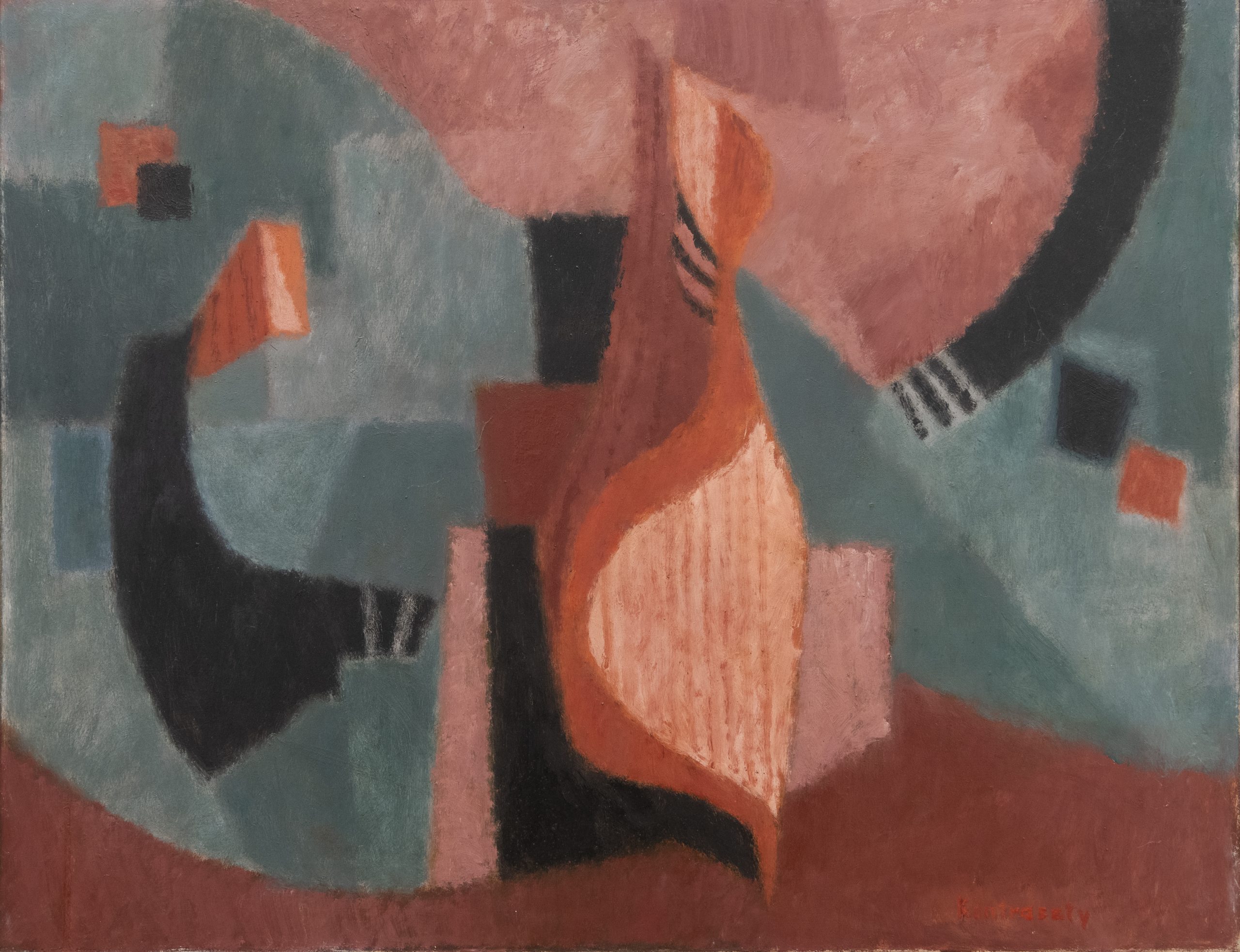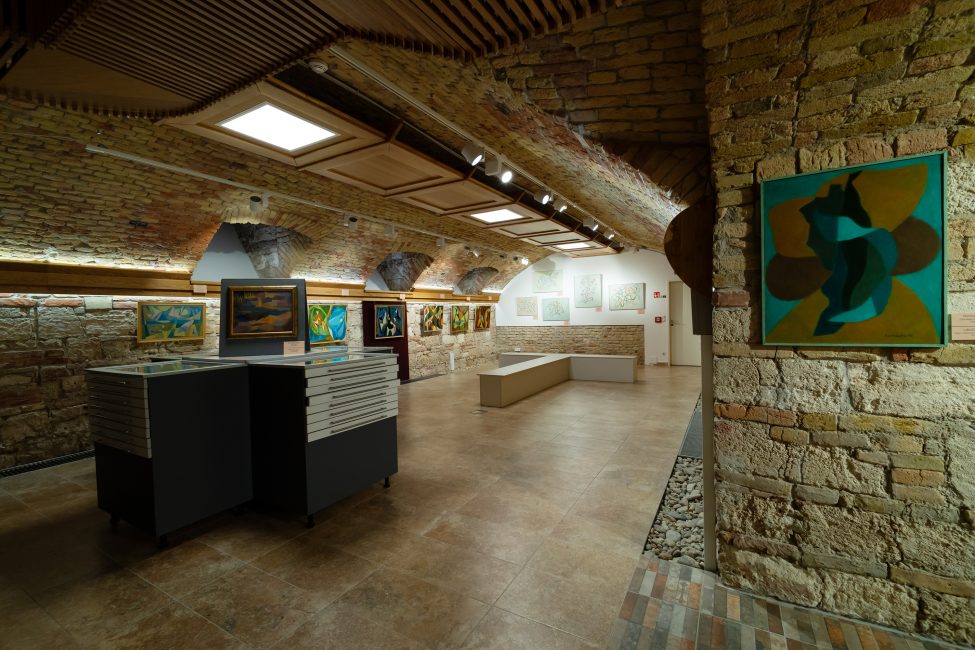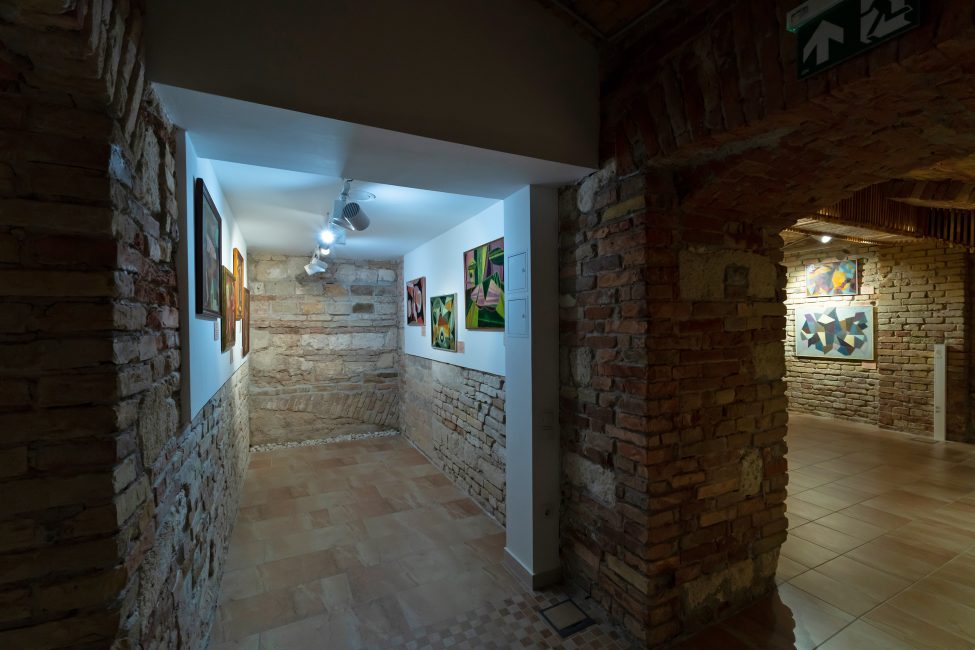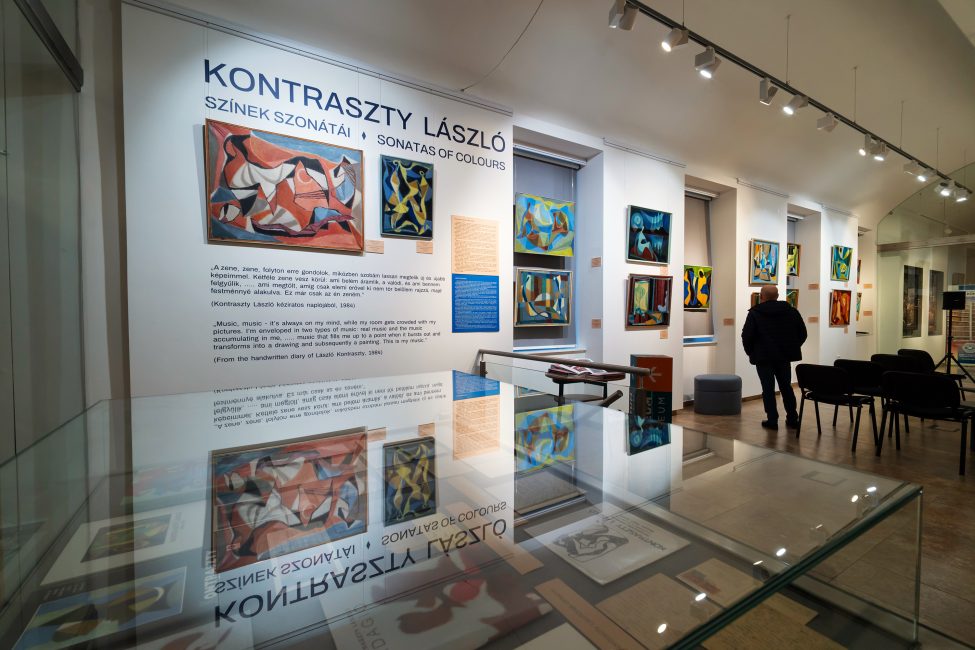Sonatas of Colours
Exhibition
Until 12th July 2025
László Kontraszty (1906–1994) was among the 20th-century painters who, by following a consistent path, created a distinctive body of work. With Italian ancestry and a middle-class family background from Szeged, he set out on his journey into the fine arts.
His artistic career, which spanned nearly a century, was greatly influenced by the ideas of Ernő Kállai and Gyula Papp, who aimed to pass on the guiding principles and vision of the Bauhaus Movement that they had brought with them from Weimar.
Through them and like-minded contemporaries, Kontraszty became acquainted with non-figurative representation. His love for classical music and its inspiration are powerfully evident in his paintings. The forms, colours, tones, and motifs in his works create rhythm and dynamism akin to a musical composition, forming flowing, winding harmonies. He himself referred to his creations as “optical music.”
His drawings were first exhibited in 1935, and later, Kállai invited him to participate in an exhibition he organised — the 1947 Exhibition of the Second Hungarian Group of Abstract Artists.

A significant period in his life was his involvement with the artistic community in Ófalu, Békásmegyer, alongside fellow artists such as Márk Vedres, Menyhért Tóth, and Tihamér Gyarmathy. He also maintained good relations with Béla Czóbel and Jenő Barcsay, frequently visiting them in Szentendre. At István Szőnyi’s studio in Zebegény, he conducted colour studies.
In 1945, he became affiliated with the European School. Among his contemporaries, he felt the closest artistic connection with Ferenc Martyn, Tamás Lossonczy, Tihamér Gyarmathy, and Oszkár Papp. His first solo exhibition was held in 1959 at the Fényes Adolf Hall, followed by one at the Kunsthalle in 1975, and later at the Ernst Museum in 1987, opened by art historian Ottó Mezei.
A fundamental characteristic of his works is the creation of contrasts, the visual representation of the tension arising from them, and ultimately their resolution. From the late 1970s, floating organic forms and later calligraphic shapes set against contrasting backgrounds became dominant in his paintings. Built upon the colours of nature, his compositions were finely tuned with subtle tonal variations and enveloped in a distinctive pearlescent glow that softened the sharpness of their contours.
This final major phase of his creative journey marked the culmination of his artistic expression in its most refined form. As reflected in the title of the 2024 monograph, his work was fulfilled in „found freedoom” (Anna Váraljai – Gábor Andrási: Kontraszty. Found Freedom, Gondolat Kiadó)
His works can be found in major domestic collections as well as internationally.
The staff of the Bible Museum felt that the moment was ripe to introduce to the public the artistic career of László Kontraszty, a previously hidden treasure of the 20th century.
The exhibition features more than 100 works from the painter’s last period on two levels.



Heavens of Heavens – The Painted Spaces of the Thought
Exhibition
Until 22nd February 2025
A selection of the work of painter Tihamér Gyarmathy is on display at the new temporary exhibition of the Bible Museum.
Gyarmathy started as a pupil of János Vaszary. He was influenced by the works of the Bauhaus masters and the classical avant-garde generation. His intellectual master was Ernő Kállai, whose 1947 book The Hidden Face of Nature and the theory of bioromanticism it expounded became a defining influence on his entire career.
After the war, he became a member of the European School, founded in 1945, and later of the Group of Abstract Artists.
Towards the end of the 1940s, when all abstract and abstract art from the depths was considered meaningless, Tihamér Gyarmathy preferred to retreat into the background to create according to his inner needs. He worked in a state job and became an outcast.

He moved from the figurative depictions typical of his early period to the intellectual and conceptual motivations that have left posterity images that are peculiarly Gyarmathy. The colours and lights, the vertical and horizontal, the often seemingly structural expressions, in which there is a universe to be explored, the microcosm and the macrocosm together. A flowing, moving world of rhythmic shapes and warm colours that evokes thoughts and shows direction.
Heavens of Heavens – Tihamér Gyarmathy’s paintings in the exhibition at the Bible Museum illuminate something of a world whose many mysteries we already know well through natural science, yet it is faith that sees and understands in all this the Creator, the great Creator of the universe.
In addition to a few early figurative works, the exhibition presents more than half a hundred of the artist’s post-war paintings, as well as some of his contemporaries
From Generation to Generation – Böhm-Collection
Exhibition
Until 27th July 2024
From generation to generation – preceding and proceeding in our footsteps…
It is always a challenge to convey the intellectual, spiritual and material legacy of successive generations to the general public in the closed world of an exhibition space.
The encounter with art forms shapes us and encourages us to move forwards.
This mission began with the foundation of József Böhm the Elder’s collection, mainly selected from the works of the Nagybánya masters.
József Böhm Jr.’s collection was greatly influenced by the works of
Transylvanian artists, including Saxon artists, and then, along with the lovingly preserved material from Nagybánya, he further enriched his collection with works from the Central European avant-garde and constructive art movement.
The exhibition honours the heritage that has guided us through the past and continues to guide us through the present and into the future.

